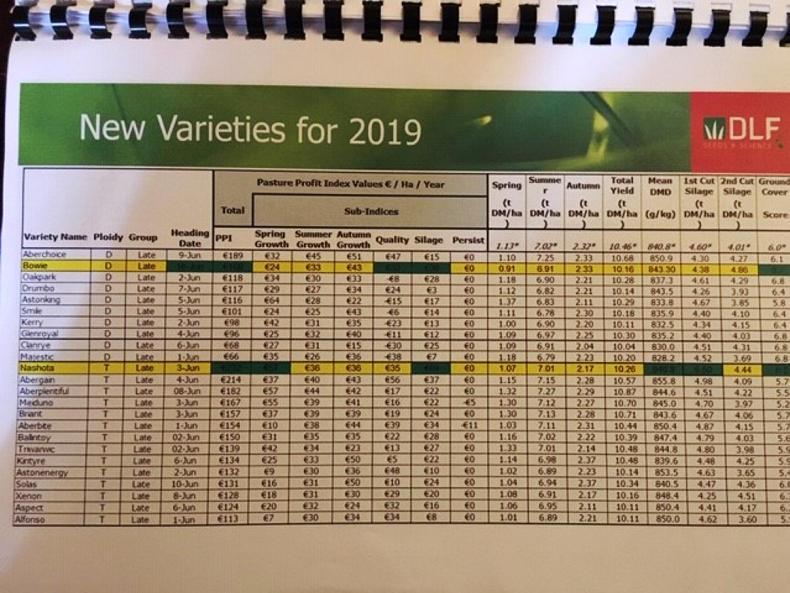DLF grass breeders held a focus event on Michael and Bernie O’Sullivan’s farm in Castleisland, Co Kerry, this Thursday.
The event gave a great insight into the research and trials being done by DFL on breeding grass varieties that will increase grass utilisation in the Irish grazing system.
DLF started in Ireland in 2015 and over the last four years has been working on breeding grass varieties that will improve grass production and utilisation on Irish farms.
This is done through research and grass trials on a research farm in Waterford and, also, through a grass partner programme.
Michael and Bernie O’Sullivan are partners in the programme and have sown a number of monocultures of DLF grass varieties.
DLF is looking at the key performers of a number of varieties on the farm in a grazing situation as opposed to mechanically cutting them through this programme.
Michael and Bernie are milking a herd of 110 black-and-white cows on a 35ha grazing block. Michael said they joined the programme as they wanted to get more from their farm.
This year, Michael is grazing a new DLF variety called Nashota, which is not yet on the Irish recommended list or PPI.
Potential
On paper, from the trials that DLF has performed in Waterford, the results are showing the potential for this to be one of Ireland's leading grass varieties.
Looking at the variety on the farm, quality and utilisation was clearly evident. A notable factor was that this was a tetraploid variety that grew and looked like a diploid variety in the field with its high ground cover and shorter leaf.
The figures suggest that it will have the quality and palatability of a tetraploid plant, giving you the benefits of both.
Research
It is early days in the trials as this variety has only been sown in a grazing system this year but this kind of research is great to see and welcomed in helping to improve and widen the grass variety available in Ireland.
DLF general manager Paul Flanagan said: "The three areas they are focusing on are graze-out, yield and quality, in that order." Paul went on to make the point that a variety that delivers 15t is not much use on a farm if the cows won’t eat it.
One thing that could be taken from the event is that there is great work and research being done to gather information and produce the best grass varieties to help increase grass utilisation on farms.






 This is a subscriber-only article
This is a subscriber-only article










SHARING OPTIONS: